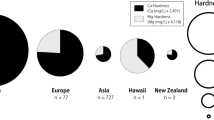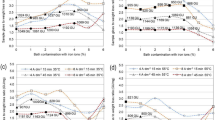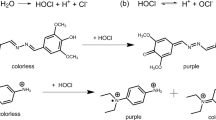Abstract
WHEN working a R.A.M.C. mobile hygiene laboratory in Northern Ireland in 1941, I found that a number of the water samples submitted for examination had a definite plumbo-solvent action. Thresh1 showed that mere acidity or alkalinity was of minor importance, but the presence of lime with a silicate or organic acid, such as citric, lessened the action.
This is a preview of subscription content, access via your institution
Access options
Subscribe to this journal
Receive 51 print issues and online access
$199.00 per year
only $3.90 per issue
Buy this article
- Purchase on Springer Link
- Instant access to full article PDF
Prices may be subject to local taxes which are calculated during checkout
Similar content being viewed by others
References
Thresh, J. C., Analyst, 47, 457 and 500 (1922); 49, 270 (1924).
Author information
Authors and Affiliations
Rights and permissions
About this article
Cite this article
ATKINS, W. Measurement of Potential Difference as a Method for Studying the Action of Water on Lead Pipes. Nature 154, 211–212 (1944). https://doi.org/10.1038/154211b0
Issue Date:
DOI: https://doi.org/10.1038/154211b0
Comments
By submitting a comment you agree to abide by our Terms and Community Guidelines. If you find something abusive or that does not comply with our terms or guidelines please flag it as inappropriate.



